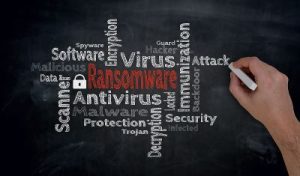
School systems are at high risk for cyber attacks because threat actors know they are traditionally underfunded and understaffed, meaning many vulnerabilities may remain open.
Once in, hackers have access to incredibly valuable and personal information on children and their families, leading to ransom requests. In fact, the education sector is now the number one sector for ransomware attacks, with a 44% increase in the past year.
The eye-opening statistics don't stop there.
- The education sector sees an average of 2,297 attacks weekly.
- By the end of 2021, nearly one in three U.S. districts had experienced a breach.
- The monetary losses to school districts following a cyber incident range from $50,000 to $1 million.
- Six months into 2023, at least 120 schools faced a ransomware attack, compared to 188 in all of 2022.



 Today's organizations know that stopping 100% of cyber-attacks is not a realistic goal. Rather, the focus has shifted to
Today's organizations know that stopping 100% of cyber-attacks is not a realistic goal. Rather, the focus has shifted to  Training has been an early application of virtual reality (VR) in government. In fact, in a
Training has been an early application of virtual reality (VR) in government. In fact, in a 
